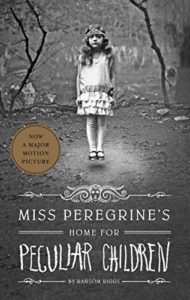 Last week I was scrolling through the list of new ebooks at my local library and stumbled across a title that made me grin. Marilla of Green Gables: A Novel by Sarah McCoy was written to tell the story of Marilla Cuthbert’s life before she and her brother became the permanent guardians of Anne Shirley.
Last week I was scrolling through the list of new ebooks at my local library and stumbled across a title that made me grin. Marilla of Green Gables: A Novel by Sarah McCoy was written to tell the story of Marilla Cuthbert’s life before she and her brother became the permanent guardians of Anne Shirley.
As a lifelong fan of Anne of Green Gables and the many sequels to that tale, I’ve often wondered why Marilla was such a stiff and proper woman when she first met Anne. L.M. Montgomery only gave a few hints about Marilla’s childhood, and most of them were vague.
While I wait for a copy of this prequel to become available at the library, I thought it would be interesting to list some other books that would benefit from a prequel to explain things in them that their original versions never got around to describing in full detail to the audience. Some of them I’ve discussed on this site in the past, while others are brand new these types of posts.
There are mild spoilers to follow in this post for certain titles, so reader beware.
1. Clan of the Cave Bear by Jean M. Auel
 This first book in the Earth’s Children series began with a five-year-old child named Ayla getting lost in the woods after an earthquake killed her parents about 30,000 years ago in ice-age Europe. It probably would have been unusual for parents to be travelling alone with such a young child, and it would have been unthinkable for someone so young to survive long at all in the woods by herself.
This first book in the Earth’s Children series began with a five-year-old child named Ayla getting lost in the woods after an earthquake killed her parents about 30,000 years ago in ice-age Europe. It probably would have been unusual for parents to be travelling alone with such a young child, and it would have been unthinkable for someone so young to survive long at all in the woods by herself.
It bothered me when this series ended without any resolution for who the main character’s original people were or why her parents were travelling alone with her when they died. Based on how many different tribes she met as an adult and how small and interconnected the human population was in general in this universe, I would have expected someone to remember hearing something about a young family disappearing without a trace a decade or two before.
Well, either that or Ayla was actually the daughter of time-travelling scientists who hadn’t made contact with ancient humans at all before their untimely deaths. But if that theory is true, why would they take a child on such a dangerous trip without at least bringing a few more adults along to help look after her and gather data about what life was really like back hen?
2. Miss Peregrine’s Home for Peculiar Children by Ransom Riggs.
 Since Ransom Riggs is still writing and publishing new portions of this series, I hope he will eventually dive into the history of what life was like for Miss Peregrine and other Peculiars before they were forced to hide in time loops.
Since Ransom Riggs is still writing and publishing new portions of this series, I hope he will eventually dive into the history of what life was like for Miss Peregrine and other Peculiars before they were forced to hide in time loops.
I’d imagine that there is a massive difference between having to relive the same day over and over again for decades to avoid being eaten by Hollowgasts (a violent monster species in this universe) and choosing to do so.
It’s hard to imagine what life was like for the Peculiars before their lives were constantly put into terrible danger. I’d like to think they had peaceful and creative existences at one point in their history.
The development of the current plot line in these books has been fantastic so far. I’d simply like to see the same attention paid to how all of this began in the first place. If that ever happens, this might become my favourite young adult series of this century.
3. Only Ever Yours by Louise O’Neill.
 There are a lot of things I have to avoid saying about this book in order to avoid giving away any spoilers for it.
There are a lot of things I have to avoid saying about this book in order to avoid giving away any spoilers for it.
Freida, the main character, had spent her entire lifetime being groomed to be the perfect wife for a man she’d never met. She was raised in an environment that was very similar to a boarding school or other institutional setting. Along with her classmates, she lived, studied, exercised, and relaxed within the same four walls.
The audience quickly learned that all women in this society are raised in these school but that none of the men are. While I can’t give you any details about why this society was set up that way, I will say that I really wish we could have a prequel to this tale that explained more clearly when and how men and women were separated this way.
There was so much ground left to cover on that topic by the time I finished this novel. It could more than fill out the pages of a full-length prequel.
4. Never Let Me Go by Kazuo Ishiguro.
Once again, the main character of this book grew up in a boarding school sort of place that had strict
 rules about what their students were allowed to do. Unlike Only Ever Yours, these characters had no idea what their fate would be when they grew up.
rules about what their students were allowed to do. Unlike Only Ever Yours, these characters had no idea what their fate would be when they grew up.
All they knew was that they were special for reasons their instructors never went into detail about.
Just like in the previous section of this post, I can’t go into many details about what was really happening in this universe other than to say that all of those adults weren’t feeding, educating, and protecting hundreds of children out of a sense of goodwill for our species. There were dark reasons for their actions that eventually began to come to light, but never to the degree I would have liked them to.
This was the sort of social experiment that I really thought should have been fleshed out in greater detail. If it were to actually happen in real life, there were be a lot of people who were vehemently opposed to it every step of the way.
Realistically speaking, how did the folks who created this system deal with the protestors? Did they keep it top secret, or did they find more violent ways to suppress the opposing side?
A prequel would be the perfect place to show how the idea for this school first took root and why it was allowed to continue.
5. The Unit by Ninni Holmqvist.
 Yes, I know I’ve blogged about this one before. It’s been so long since my last mention of it that I simply had to bring it up again since this is the sort of story that haunts me long after I’ve finished the final scene.
Yes, I know I’ve blogged about this one before. It’s been so long since my last mention of it that I simply had to bring it up again since this is the sort of story that haunts me long after I’ve finished the final scene.
For those of you who haven’t read it yet, The Unit is about a futuristic version of America where women over the age of 50 and men over the age of 60 who haven’t met specific milestones like getting married or having children are forced to donate their organs and other tissues to people who need them. Yes, this included organs that one can’t live without like the heart.
What frightened me the most about this world was how realistic it felt. Forced organ donations are already known to be happening in certain parts of the world today. While it still feels unrealistic for it to occur in North America where this tale was set, I would have loved to know how such a system was sold to the population at large in a fictional version of the United States.
Would the general public have believed that these people were dying willingly to save strangers? Had this group of people been so dehumanized that average folks no longer thought of them as fellow human beings? I had so many questions about how this system had been sold to society in general that were never answered. A prequel would be the perfect way to finally know how and when the protagonist, Dorrit Weger, and all of the other people sent to The Unit were marked as dispensable without anyone fighting to save them.
What stories do you wish had a prequel?

Interesting post. I’ve often wondered what Marilla was like as a young woman as well.
I have mixed feelings about prequels as sometimes it defeats the purpose of book one.
Thank you for sharing this on Monday Blogs.
You’re welcome! Yes, I’ve also read prequels that didn’t work so well in their universes. Sometimes less is better, but I do have high hopes for the Marilla book.